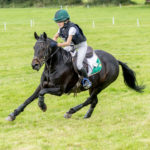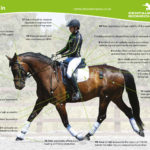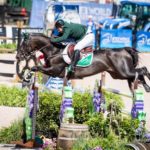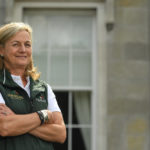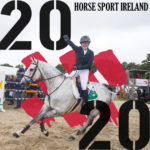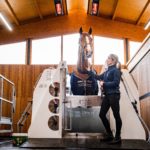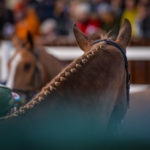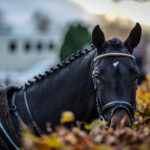SARAH ENNIS: Training the Young Event Horse
- 1 February 2021, 13:44
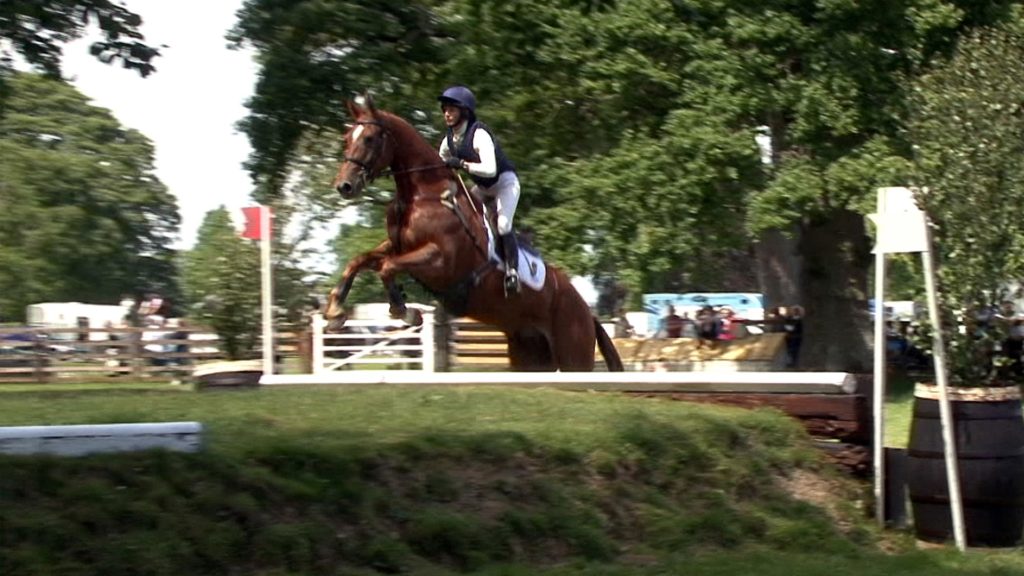
Sarah Ennis and Stellor Commet, a four-year-old Irish Sport Horse, compete in the 2013 Future Event Horse League
In this the first of our young horse training series we speak to, WEG eventing silver medallist and Horse Sport Ireland-Accredited Coach, Sarah Ennis about how she trains and produces her young eventers.
Sarah is well known for participating in Ireland’s national leagues for young event horses, namely the Stepping Stones to Success League (SSSL) and the Young Event Horse Series (YES), formerly known as the Future Event Horse League (FEHL). Sarah has also won both the four and five-year-old Young Event Horse finals at the Dublin Horse Show.
Q1. Ideally, when would you begin breaking your young horses?
Sarah Ennis (SE): For me, the ideal time would be during the summer months of their three-year-old year, any time up until about September. Starting during the summer gives you plenty of time and flexibility for time off etc. and should give you enough time to prepare for the likes of the SSSL [usually starts in March] or the YES [usually starts in June] which are both open to four and five-year-old horses.
It’s also good to be able to turn horses out in the fields so that after a session in the tack etc. they get back to nature and just relax their head and chill for a while because the breaking process can be a lot to take in.
I have one horse in at the moment who was broken in October and I think it’s going to be too much pressure and too much of a rush to have him ready for a start in March, he was just two or three months too late getting started.
Q2. How long would you usually allow for the breaking process?
SE: I like to take that initial work on the ground very slowly, I would allow six to eight weeks for breaking, however, every horse is different and some take to it more quickly than others. I like to be able to give the horse as much time as they need to get used to the tack and the feeling of being asked to move forward etc. I think that a horse is more likely to buck and bronk if you rush the process of getting up on to their back before they are ready. The horse needs to be in the right frame of mind for you to start riding them.
That doesn’t mean that time spent on the ground can’t be valuable and educational. Once the horse is settling with the breaking tack and lunging, I would often get them lunging through water or across a little bank so that they get a feel for a little bit of everything before you try it on their back.
Once the horse is backed, I would usually just do a small bit with them initially before turning them out for a break. I’d generally bring them back in about six to eight weeks before Christmas to do a little bit more ridden work and to get them out and do a bit of schooling away from home. Then I would aim to give them another bit of time off until the end of January/start of February.
Q3. Assuming your four-year-old’s season will start in March, how far in advance would you start their preparation?
SE: I would aim to have my young horses in consistent work for at least eight weeks ahead of their season getting underway in March. This would be the minimum preparation time that I would recommend.
Q4. What would a typical week look like for a young horse preparing for the SSSL?
SE: When we ride our young horses, we would typically ride them for about 30-40 minutes. It’s very important to keep a horse’s training varied. Our horses are usually given their day off on a Sunday, we might do some flatwork on a Monday, pole work the next day, then some jumping at home, followed by a hack the day after that.
It’s important to incorporate regular days away schooling into your week when preparing for the beginning of the season. We would try and get our horses away schooling once a week or at least every second week. We do this to just normalise travelling and seeing new venues. The more familiar and comfortable they are with it the easier it will be at their first competition.
Q5. One of our followers asked: “What exercises would you use to help slowly strengthen a horse’s core and back?”
SE: Good question. It starts with the core because the core is vital for stabilising the back and if the horse is weak in the core they will struggle with their balance and will struggle to perform. Pole-work and the way in which you ride your horse is going to be very important, here are some examples:
WALKING POLES
Walking over poles is an excellent way to build core strength because there is no moment of suspension in the walk, this means that the horse really must use their muscles, see Figure 1 below.
Set out six poles 80-90cm apart. If your horse is green, lacking strength, or not used to pole-work then start with the poles on the ground and aim to work up to the middle four poles being slightly raised. If you are setting the poles out on the ground just make sure that you use square poles so that the poles cannot roll under foot if the horse were to stand on one. If a horse steps on a pole and it rolls underfoot, it can cause injury.
You can lead your horse over the poles from the ground or you can ride over them, if you are riding think straightness and encourage your horse to stretch down its head and neck.
CORE LIFTS
Core lifts are done from the ground and are another great way to help gently build your horse’s core and back strength. You start by applying firm pressure with your fingertips to the spot at which your horse’s girth sits in the middle of his chest. Start with a gentle pressure, you may need to press a little more firmly if your horse does not react, keep this pressure firm but without causing discomfort. Horses can be very sensitive in this area.
Hold pressure for 10-15 seconds then release and this will encourage the horse to flex up through the back and ribs, by working the core and back muscles. The horse will hold the stretch for a few seconds after you let go, allow the horse to fully relax then repeat up to three times and try to do this both before and after riding.
HILL WORK
Incorporating a little bit of hill work into your training can really help strengthen the horse. It only needs to be a slight incline to be effective and you can start in walk, building up to trot and canter. You can then start to increase the size of the hill you are using as your horse matures and develops.
Q6. Another one of our followers asked: “What exercises would you use to help improve a horse’s jumping technique?”
SE: Another good question. As I mentioned before, the way in which you ride your horse is going to be very important – straightness is key. When the horse can keep straight their technique will improve as they will be better able to jump up through their shoulder.
Practice keeping your horse straight on the flat and when jumping you can use Guide Poles and ‘V’ Poles, see Figure 2 below.
Start by setting up a small upright fences, lay two guide poles on the approach to the fence, again make sure that these are square poles so that the poles cannot roll under foot if the horse were to stand on one. This will help keep the horse straight, then prop up two lightweight rails on either side of the fence, about a quarter of the way in from each side – these act as a channel to help you and your horse meet the centre of the fence. It is important that the rails used are lightweight and will easily move out of the way if the horse was to tip one.
When you’re feeling more confident and consistently jumping the centre of the fence, gradually widen the guide poles to the edge of the fence and then drop them onto the ground. Eventually you won’t need to use them at all.
Q6. What level of training/ability is required for a horse to take part in the SSSL?
SE: The SSSL incorporates dressage, showjumping and cross country. The dressage test incorporates all the usual movements, serpentines, circles, transitions etc. You may be asked to show the horse stretching down on a long rein in working trot and five-year-olds might be asked to show some lengthened strides in trot and some medium canter strides.
Trainability is the main thing, the horse needs to be supple, it must have a natural ability to engage the hind legs and the horse must show that it accepts the bit. The Judges are really looking for three correct, elastic and regular gaits and that the horse is obedient in its transitions. The Judges will also assess the horse’s confirmation and type during this phase.
The jumping section usually includes six show jumps, including a double, which is immediately followed by a course of about 12 solid cross-country fences and a bank might also be included. The jumps are usually no higher than 90cm for four-year-olds and about and 1.05m for five-year-olds. The Judges are mainly looking for a bold athletic horse with good technique.
The jumping is not timed so you can take it nice and easy. The SSSL is excellent for educating a young horse and I find it very beneficial.
Q6. What level of training/ability is required for a horse to take part in the YES/Dublin Horse Show Final?
The YES is a step up from the SSSL, it’s very competitive, but similarly it incorporates basic flatwork, showjumping and cross country. Four-year-olds would be expected to be comfortable jumping up to 1m and five-year-olds would be jumping up to 1.10m. Time is also a factor in the jumping phase for the YES, but it is quite fair.
I would very much use the SSSL as my guide to whether I would enter a horse in the YES. Especially when it comes to entering a four-year-old, there are few four-year-olds that would be ready to step up to the level required for the YES by June and the Dublin Horse Show in August.
I’ve only ever had one four-year-old, Stellor Commet, who I went on to do the YES with. He just found the SSSL so easy, he never struggled and he had no problems stepping up. He qualified for the Dublin Horse Show Final and went on to win the class. He was amazing, but it’s definitely not for every four-year-old. CLICK THE PICTURE BELOW TO WATCH STELLOR COMMET IN ACTION.
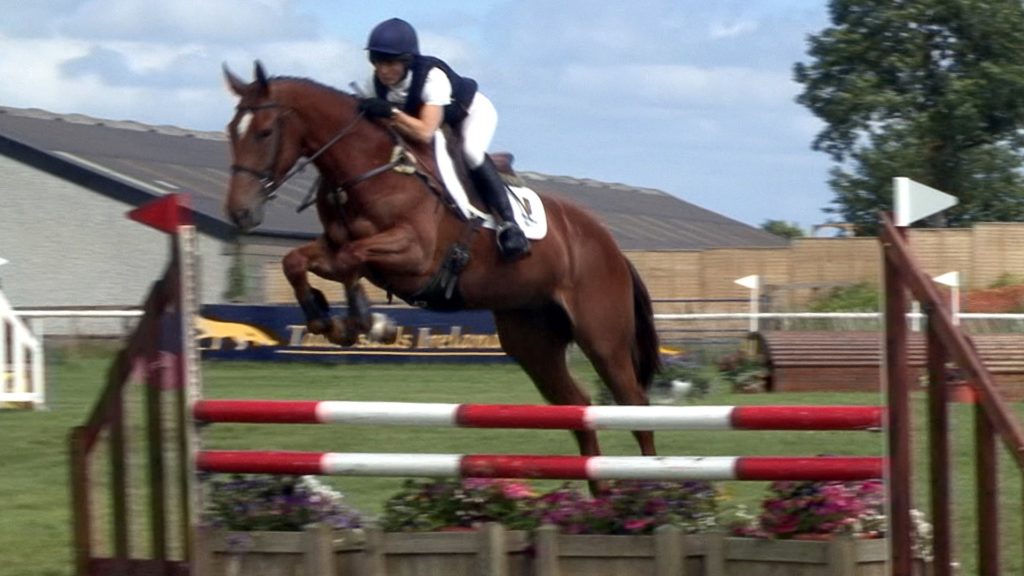
Sarah Ennis and Stellor Commet, a four-year-old Irish Sport Horse, compete in the 2013 Future Event Horse League
Q7. How would you know that your horse is ready to step up and take part in the YES/Dublin Horse Show Final?
SE: I usually find if you have done the SSSL and the horse hasn’t had any issues and you are feeling really confident, then usually the horse will take to the YES quite well. But, if I had a horse who started out in the stepping stones and had a few little issues along the way and I found that they were only just starting to get the hang of it by the last leg of the league then that’s not one that I would consider entering for the YES.
You must be fair to your horse, if they haven’t been consistent throughout the SSSL then you need to take a step back and work on the areas that need improving otherwise you risk damaging your horse’s confidence.
For any amateur riders interested in taking part I would certainly advise getting a few lessons from a Horse Sport Ireland Accredited Coach in advance of entering to get their advice. Especially if there is any doubt in your mind.
Q8. If you were to find yourself in a situation where you or your horse has lost confidence, what would you do?
SE: The main thing is to get back to a level where you and/or your horse feels comfortable.
If my young horse lost a bit of confidence with the jumping or cross-country I would put them on the lunge line and allow them to just figure out the obstacle for themselves so that they are not blaming me. I find that’s a great confidence giver because they are learning to negotiate the obstacle themselves.
The main thing for the rider is to remember that setbacks are an inevitable part of training a horse, so don’t let them get to you. There is no shame in going back a few steps and I can’t say enough about getting some help.
Q9. What advice would you offer to riders/owners taking their young horse to their first competition?
SE: I think as a rider you need to have high expectations and high hopes because that’s what ultimately gets you there. To give yourself the best chance of success, make sure you are well prepared and get to the competition in plenty of time. There is nothing worse than bringing a youngster to a competition and being rushed for time – that is a recipe for disaster in most cases.
-
Popular

-
Latest











